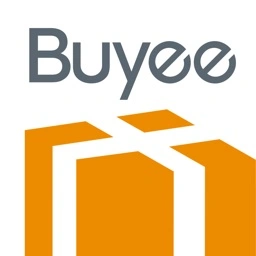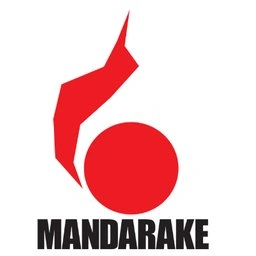I’ll never forget opening that first package from Japan. After weeks of anxious tracking and daily mailbox checks, there it was—my first authentic anime figure, wrapped in Japanese newspaper and packed with care. That magical unboxing moment transformed me from casual fan to dedicated collector, and ever since, I’ve been obsessed with importing directly from the source.
Let’s face it: nothing compares to authentic Japanese anime goods. The quality, exclusivity, and sheer variety available directly from Japan leaves local options in the dust. But navigating the world of Japanese imports can be overwhelming. Confusing websites, language barriers, proxy services, shipping options, customs fees—it’s enough to make anyone’s head spin!
After years of trial, error, and more than a few expensive lessons, I’ve assembled this comprehensive guide to importing Japanese anime merchandise. Whether you’re eyeing that limited-edition figure, hunting down merchandise from an obscure series, or simply want the authentic experience of shopping directly from Japan, I’ll show you exactly how to make it happen in 2025.
Why Import Directly from Japan?
Before diving into the best websites and services, let’s quickly talk about why importing directly from Japan is worth the extra effort:
- Exclusive items never released internationally
- Earlier release dates for new merchandise (often months ahead)
- Vastly larger selection than what makes it overseas
- Better prices on many items (despite shipping costs)
- Authentic products with zero chance of counterfeits
- Limited editions and store-exclusive bonuses
- Supporting the industry directly in Japan
Sure, it’s easier to buy locally or from international resellers, but you’ll typically pay inflated prices for a fraction of what’s available. For true anime fans, going direct to the source is the ultimate way to enhance your collection.
1. AmiAmi
Best For: Figures, plushies, and general anime merchandise
Direct International Shipping: Yes
English Support: Excellent
AmiAmi has been my go-to source for anime figures and merchandise for years, and they’ve only gotten better in 2025. Their fully English website makes navigation a breeze, and their vast catalog covers everything from budget-friendly prize figures to high-end scales and limited editions.
What makes AmiAmi exceptional:
- Enormous selection across virtually all anime franchises
- Frequent discounts on pre-owned items (often 10-30% off retail)
- Reliable pre-order system for upcoming releases
- Impeccable packaging that prevents shipping damage
- Multiple shipping options for different budgets
- Detailed product photos and information in English
The pre-owned section deserves special mention—I’ve found rare, out-of-production figures in near-mint condition for prices that would make Western resellers blush. They grade items honestly, so you know exactly what you’re getting.
My one caution about AmiAmi is their strict pre-order cancellation policy. Once you commit to a pre-order, they expect you to follow through, and too many cancellations can lead to account restrictions. Their shipping costs are calculated after ordering, which can sometimes lead to surprise expenses for larger items. Still, for their selection, authenticity, and customer service, AmiAmi remains unbeatable.
2. Amazon Japan
Best For: Books, manga, and media
Direct International Shipping: Yes
English Support: Partial (site can be switched to English)
Amazon Japan might seem like an obvious choice, but it’s often overlooked by international collectors. That’s a mistake—their streamlined international shipping process, familiar interface, and upfront pricing make them perfect for dipping your toes into importing.
What I love about Amazon Japan:
- Transparent shipping costs calculated at checkout
- Many items eligible for international shipping (clearly marked)
- Upfront payment of import duties and taxes on eligible items
- Familiar Amazon interface with English language option
- Consolidated shipping for multiple items
- Reliable tracking and customer service
I primarily use Amazon Japan for manga, light novels, art books, and Blu-rays. Their book selection is phenomenal, and shipping costs are reasonable for these items. You can even find exclusive “Amazon Japan Limited Edition” versions of many anime releases with special bonuses not available elsewhere.
The biggest drawback is that third-party sellers on Amazon Japan often don’t ship internationally, limiting your options somewhat. Some product categories (especially large figures or items with batteries) may also be restricted from international shipping. Despite these limitations, Amazon Japan remains one of the most user-friendly ways to import directly from Japan.
3. ZenMarket
Best For: Proxy shopping from any Japanese website
Direct International Shipping: Yes (as a proxy service)
English Support: Excellent
ZenMarket has revolutionized how I shop from Japan. As a proxy service, they’ll purchase items from virtually any Japanese website on your behalf, consolidate them in their warehouse, and ship everything together to save on international shipping costs.
Why ZenMarket has become essential in my import strategy:
- Access to literally any Japanese website (even those without English options)
- Transparent 300 yen (~$2) service fee per item
- Free package consolidation to save on shipping costs
- Clear photographs of your items before international shipping
- Excellent packaging with optional protective measures
- Multiple shipping methods from budget to express
Through ZenMarket, I’ve purchased from Japanese-only sites like Animate, Surugaya, and Mercari (Japan’s version of eBay). They’ve opened up entire marketplaces that would otherwise be inaccessible to international buyers.
Their package consolidation feature is a game-changer—I’ll often gather items from 5-6 different Japanese stores over a few weeks, then have everything shipped together in one box. This has saved me hundreds of dollars on international shipping over the years.
While their 300 yen per item fee adds up for small purchases, the access they provide to Japan’s entire retail ecosystem makes ZenMarket invaluable for serious collectors.
4. Buyee
Best For: Yahoo! Japan Auctions and used items
Direct International Shipping: Yes (as a proxy service)
English Support: Very Good
Buyee is another proxy service, but they specialize in accessing Japan’s auction and secondhand markets. They’re the official international partner for Yahoo! Japan Auctions (much bigger than eBay in Japan) and provide exclusive access to Mercari Japan.
What sets Buyee apart for collectors:
- Official access to Yahoo! Japan Auctions (with automatic bidding)
- Exclusive partnership with Mercari Japan
- Support for major Japanese retailers (Animate, Rakuten, etc.)
- Frequent shipping coupons and promotional discounts
- Easy-to-use interface designed for international users
- Optional inspection and protective packaging services
Through Buyee’s Yahoo! Auctions access, I’ve scored incredible deals on vintage anime merchandise, out-of-print books, and rare promotional items that never appeared in regular retail channels. For collectors seeking older or discontinued items, this access is priceless.
The downside to Buyee is their fee structure, which is more complex than ZenMarket’s. Beyond their basic service fee, they charge for optional services like package consolidation and protective packaging. These costs can add up quickly if you’re not careful. Still, for access to Japan’s auction and secondhand markets, they’re often worth the premium.
5. Mandarake
Best For: Second-hand and vintage anime goods
Direct International Shipping: Yes
English Support: Good
Calling Mandarake a “used store” doesn’t do it justice—this is the holy grail for collectors seeking vintage, discontinued, or rare anime merchandise. With multiple physical locations throughout Japan and a comprehensive online store, they’re the world’s largest seller of second-hand anime goods.
What makes Mandarake special:
- Vast inventory of discontinued and rare items
- Incredibly strict authenticity standards
- Detailed condition descriptions for used items
- Regular stock updates as new items arrive
- Often the only source for older collectibles
- Multiple physical stores with different inventories
Mandarake’s website is… let’s call it “charmingly archaic.” The interface feels straight out of 2005, but don’t let that fool you—their inventory system is meticulously organized by store location and category. Each physical Mandarake store maintains its own inventory in the system, so you might find the same item at different prices or conditions across locations.
What truly sets Mandarake apart is their expertise in authenticating items. In a market flooded with counterfeits, especially for rare figures and vintage goods, Mandarake’s guarantee of authenticity is invaluable. Their strict standards for item condition also mean that their “B” grade items are often better than what other stores would sell as “A” grade.
The main challenge with Mandarake is that shipping is calculated per store location, not per order. If you purchase items from three different Mandarake stores, you’ll pay for three separate international shipments, which can get expensive. Strategic shopping from a single store location can help mitigate this issue.
6. Animate
Best For: Exclusive anime merchandise and store-limited items
Direct International Shipping: Limited (best used with a proxy)
English Support: Limited
Animate is Japan’s largest retailer specializing in anime, manga, and related merchandise, with over 100 physical stores and a comprehensive online presence. They’re known for exclusive collaborations and store-limited items you simply cannot find anywhere else.
What makes Animate worth the extra effort:
- Exclusive merchandise and store-limited editions
- Special promotional bonuses with purchases
- Early access to new releases
- Frequent collaboration cafes and events
- Animate-exclusive variant covers for manga and novels
- Unique merchandise lines not available elsewhere
While Animate offers international shipping to some countries, their service is limited and navigation can be challenging without Japanese language skills. I’ve found that using a proxy service like ZenMarket is the most reliable way to purchase from Animate’s online store.
The real magic of Animate is their exclusive bonuses and limited editions. For popular series, they frequently offer special clear files, pins, acrylic stands, and other bonuses when you purchase manga or merchandise. During character birthdays or series anniversaries, they may release merchandise available only through Animate.
For die-hard fans of specific series, accessing Animate’s exclusives through a proxy service can be well worth the additional effort and cost. Just be prepared for a more complex ordering process than direct international retailers.
Shipping Methods Comparison
Getting your treasures safely from Japan to your doorstep is critical, and choosing the right shipping method can significantly impact both cost and delivery time. Based on my experiences importing to various countries, here’s what you need to know about the main options in 2025:
Japan Post EMS (Express Mail Service)
- Speed: Fast (3-7 days to most countries)
- Cost: Moderate to High
- Tracking: Excellent
- Insurance: Included (up to 20,000 yen)
- Best For: Valuable items where speed matters
EMS remains the gold standard for most collectors, offering the perfect balance of speed, reliability, and cost. I use EMS for expensive figures or limited editions where I want the added security of comprehensive tracking and insurance.
Japan Post Air Mail
- Speed: Moderate (1-3 weeks to most countries)
- Cost: Economy
- Tracking: Basic (not available to all countries)
- Insurance: Limited
- Best For: Smaller, less expensive items
Air Mail offers significant savings over EMS but takes longer and provides less robust tracking. I typically use Air Mail for manga, small merchandise, and other non-fragile items where insurance isn’t as critical.
Japan Post Surface Mail
- Speed: Very Slow (2-3 months to most countries)
- Cost: Very Economical
- Tracking: Limited or None
- Insurance: Limited
- Best For: Non-urgent large or heavy shipments
Don’t underestimate Surface Mail! For budget-conscious collectors, this ocean shipping method offers dramatic savings, especially for heavy items like large figure collections or manga sets. I once shipped a box of 30 manga volumes for about one-third the cost of EMS. The trade-off is the agonizing wait—expect 2-3 months for delivery.
DHL/FedEx
- Speed: Very Fast (2-5 days worldwide)
- Cost: Premium
- Tracking: Comprehensive
- Insurance: Included
- Best For: Urgent deliveries or extremely valuable items
Private couriers offer the fastest delivery but at premium prices. I rarely use these services except when time is critical. Be aware that some countries may experience more rigorous customs inspections and higher fees with private couriers compared to national postal services.
Shipping Cost Examples (2025 Rates)
To give you a concrete idea of shipping costs, here’s what you might expect to pay for common anime merchandise (prices are approximate and will vary by destination country):
| Item Type | Weight | EMS | Air Mail | Surface Mail | DHL |
|---|---|---|---|---|---|
| Single Manga Volume | 300g | $15-20 | $8-12 | $5-8 | $25-35 |
| Prize Figure (Boxed) | 500g | $20-30 | $12-18 | $8-12 | $35-45 |
| Scale Figure (Boxed) | 1.5kg | $35-50 | $25-35 | $15-20 | $55-70 |
| Collection (10 manga) | 3kg | $50-70 | $35-45 | $20-25 | $75-95 |
These estimates assume shipping to major international destinations like the US, UK, or Australia. Costs may vary significantly for other regions.
Customs and Import Taxes
One of the most anxiety-inducing aspects of importing is dealing with customs and import duties. While I can’t cover every country’s specific regulations, I can share some universal wisdom gained from years of international collecting:
Import Fees
Most countries charge some combination of:
- Customs Duty: Tax based on the item’s value and category
- Value Added Tax (VAT) or Sales Tax: Percentage of the item’s declared value
- Handling Fee: Charged by the delivery service for processing customs clearance
These fees vary dramatically by country. For example, the UK charges 20% VAT on imports over £135, while Canada applies 5% federal tax plus provincial taxes ranging from 0-10%. The US has a more generous exemption, with no duties on most shipments valued under $800.
Strategies for Managing Import Costs
While I never advocate for customs evasion (which is illegal and can result in seized packages), there are legitimate ways to minimize import costs:
Consider package consolidation: Having one larger shipment often incurs lower overall fees than multiple small packages, as some countries charge a flat processing fee per package regardless of value.
Be aware of duty-free thresholds: Many countries have minimum value thresholds below which no duties are charged. Breaking large orders into smaller shipments that fall under this threshold can sometimes be cost-effective (check your local regulations).
Use Japan Post when possible: In many countries, packages delivered through national postal services undergo less rigorous customs screening than private couriers like DHL or FedEx.
Keep all documentation: Always save your order confirmations, payment receipts, and shipping notices. These can be crucial if you need to dispute a customs valuation.
Remember that customs regulations and duty rates change frequently. Always check your country’s current import rules before making significant purchases.
Smart Shopping Strategies and Tips
After years of importing from Japan, I’ve developed some strategies that have saved me thousands of dollars while helping me snag rare items before they disappear. Here are my top tips for importing like a pro:
Pre-Order Strategically
For popular figures and merchandise, pre-ordering is often essential—many items sell out during the pre-order phase and never hit regular retail. However, different stores have different pre-order policies:
- AmiAmi doesn’t charge until an item ships, but has strict cancellation policies
- HobbyLink Japan allows easier cancellations but may charge higher prices
- Tokyo Otaku Mode charges upfront but offers points back on purchases
- Good Smile Company (manufacturer shop) includes exclusive bonuses with figure pre-orders
I typically spread pre-orders across multiple shops based on each store’s strengths for particular items.
Hunt for “Treasure” in Second-Hand Stores
Japan has a thriving second-hand market with incredibly high standards. Items listed as “used” in Japan are often in what most Western collectors would consider mint or near-mint condition. My best finds have come from:
- Mandarake’s daily website updates (check regularly!)
- Surugaya through ZenMarket proxy (incredible prices on used items)
- Yahoo! Japan Auctions via Buyee (especially for vintage items)
- Mercari Japan for private sellers with unique items
The condition grading in Japan is notoriously strict—what they call “B grade” is often indistinguishable from new to all but the most discerning eyes.
Leverage Seasonal Sales
Japan has several major shopping seasons when retailers offer significant discounts:
- Golden Week (late April to early May)
- Summer Sales (August)
- Black Friday (November, increasingly popular in Japan)
- Year-End/New Year Sales (December-January)
These periods often feature special promotions like reduced shipping, exclusive items, or store-wide discounts. Planning major purchases around these sales can yield substantial savings.
Join Community Forums
Some of my best finds came from tips shared in collector communities. Active forums and groups include:
- r/AnimeFigures on Reddit
- MyFigureCollection.net forums
- Discord servers for specific series or collectible types
- Figure.fm for Japanese collector insights
These communities often share alerts about restocks, hidden gems, and store promotions you might otherwise miss.
Conclusion
Importing directly from Japan transformed my collecting experience. There’s something special about receiving items straight from their country of origin, often months before they’re available internationally (if they ever are). The thrill of unboxing authentic Japanese merchandise—complete with Japanese packaging and often store-exclusive bonuses—adds a dimension to collecting that simply can’t be replicated through domestic purchases.
Yes, there’s a learning curve. Yes, there will be moments of frustration dealing with customs or tracking packages across the globe. But the rewards—access to the full spectrum of merchandise, better prices on many items, and the satisfaction of building a collection most fans will never have the opportunity to see in person—make the effort worthwhile.
🌏 Japanese Imports FAQ
Is importing directly from Japan worth the additional shipping costs?
For serious collectors, absolutely. Direct imports offer three major advantages: access to Japan-exclusive merchandise never released internationally, earlier availability (often 3-6 months before international release), and better selection. While shipping does add cost, the base prices in Japan are often lower than international retail, sometimes offsetting much of the shipping expense. For common items widely available internationally, the savings may be minimal, but for exclusives, limited editions, and items from less popular series, direct importing is often the only option. The value equation improves further when using package consolidation through proxy services, allowing you to combine multiple purchases into one shipment to save on international shipping costs.
How can I tell if a Japanese website offers international shipping?
Look for English language options on the website—this is often (though not always) an indicator that they cater to international customers. On Japanese-only sites, search for “overseas shipping” (海外配送) or “international shipping” (国際配送). Many sites have shipping information pages that list eligible countries. Major retailers like AmiAmi, HobbyLink Japan, and Amazon Japan clearly indicate international shipping availability during checkout. If you’re uncertain, try adding items to your cart and proceeding to checkout—shipping restrictions will typically appear before payment. When a site doesn’t offer direct international shipping, proxy services like ZenMarket or Buyee provide a workaround, allowing you to purchase from virtually any Japanese website regardless of their shipping policies.
What should I do if my package gets stuck in customs?
First, don’t panic—delays at customs are common and usually resolve within a few days to two weeks. Check your tracking information for specific customs status messages or requirements. If the package has been held for more than two weeks, contact your local postal service or customs office using the tracking number for more information. They may require additional documentation, payment of import duties, or clarification about the package contents. Keep all purchase receipts and order confirmations handy, as you may need to provide these as proof of value. For high-value items, consider using shipping methods that include customs clearance assistance, such as DHL or FedEx, or proxy services that offer customs support. Never attempt to circumvent customs procedures, as this can result in seized packages and potential legal issues.
How do I protect myself from counterfeit anime merchandise?
The most reliable protection is purchasing directly from authorized Japanese retailers like AmiAmi, Tokyo Otaku Mode, or manufacturer shops like Good Smile Company. Japan’s domestic market has stringent anti-counterfeit measures, making fakes relatively rare within Japan (unlike international reseller markets). For secondhand items, stick to reputable Japanese stores like Mandarake, which have rigorous authentication processes. When using auction sites like Yahoo! Japan Auctions through Buyee, check seller ratings and review item photos carefully. Research the specific product you’re purchasing—many popular figures have known counterfeit versions with telltale differences in packaging, paint quality, or manufacturing details. Communities like MyFigureCollection.net often document these differences. Lastly, be suspicious of prices significantly below market value, especially for rare or highly sought-after items, as these are often counterfeits or scams.
What should I do if an item arrives damaged from Japan?
Document the damage immediately with clear photographs of both the item and the packaging. Contact the seller or proxy service within 24-48 hours—most have policies covering items damaged in transit if reported promptly. If you purchased through a proxy service like Buyee or ZenMarket, they typically offer claim processes for damaged items, but may require you to have purchased their optional protection plans. For direct purchases from retailers, contact their customer service with your order number and damage photos. Japan Post offers insurance on EMS packages (typically up to ¥20,000), while private couriers like DHL have their own claims processes. Keep all packaging materials until the claim is resolved, as they may be needed as evidence. In my experience, Japanese retailers and proxy services generally handle damage claims professionally, often offering replacements, refunds, or partial compensation depending on the circumstances and severity of damage.






